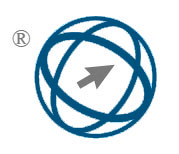Machine Learning Empowered: Support Vector Machine-Based Selection of Encryption Techniques for Digital Image Security Levels
Abstract
Recent advancements in multimedia systems have increased the demand for strong digital image security mechanisms. Traditional cryptosystem evaluations, dependent on manual statistical analysis, are computationally exhaustive and not scalable. This study proposes a machine learning-based framework, such as a Support Vector Machine (SVM) classifier, for the categorization of image encryption levels into three discrete classes: Strong, Acceptable, and Weak. The model is trained using statistical descriptors such as Peak Signal to Noise Ratio (PSNR), entropy, Mean Square Error (MSE), energy, correlation, homogeneity, and contrast extracted from encrypted image datasets. Feature normalization techniques, StandardScaler, have been used to ensure balanced input contributions. The proposed system, i.e., SVM with a Radial Basis Function (RBF) kernel, outperforms other kernels. The performance of the proposed model shows an average classification accuracy of 98%, precision up to 100%, and an F1-score of 97%. A web-based interface developed using Django integrates the model, enabling real-time analysis and visualization, making the proposed system a scalable solution for cryptographic strength evaluation in image security applications.
References
Yuling Luo, Xue Ouyang, Junxiu Liu, and Lvchen Cao. An image encryption method based on elliptic curve elgamal encryption
and chaotic systems. IEEE Access, 7:38507–38522, 2019.
Chengye Zou, Qiang Zhang, Xiaopeng Wei, and Chanjuan Liu. Image encryption based on improved lorenz system. IEEE Access,
:75728–75740, 2020/
Shuqin Zhu and Congxu Zhu. A plaintext-related image encryption algorithm based on block structure and five-dimensional chaotic
map. IEEE Access, 7:147106–147118, 2019.
Lu Xu, Zhi Li, Jian Li, and Wei Hua. A novel bit-level image encryption algorithm based on chaotic maps. Optics and Lasers in Engineering, 78:17–25, 2016.
Shuqin Zhu and Congxu Zhu. Secure image encryption algorithm based on hyperchaos and dynamic dna coding. Entropy, 22(7):772,
Minal Govind Avasare and Vishakha Vivek Kelkar. Image encryption using chaos theory. In 2015 International Conference on Communication, Information & Computing Technology (ICCICT), pages 1–6,. IEEE, 2015.
Hegui Zhu, Lewen Dai, Yating Liu, and Lijun Wu. A three-dimensional bit-level image encryption algorithm with rubik’s cubemethod. Mathematics and Computers in Simulation, 185:754–770, 2021.
M Kaur and VJEL Kumar. Efficient image encryption method based on improved lorenz chaotic system. Electronics Letters,
(9):562–564, 2018.
Arslan Shafique, Jameel Ahmed, Wadii Boulila, Hamzah Ghandorh, Jawad Ahmad, and Mujeeb Ur Rehman. Detecting the security level of various cryptosystems using machine learning models. IEEE Access, 9:9383–9393, 2020.
Ramani Sagar, Rutvij Jhaveri, and Carlos Borrego. Applications in security and evasions in machine learning: a survey. Electronics, 9(1):97, 2020.
M Gomathi, S Gunasekar, S Abinesh, et al. Detecting the security level of various cryptosystems using machine learning model. International Journal of Progressive Research in Science and Engineering, 3(05):25–31, 2022.
Georgios A. Kaissis, Marcus R Makowski, Daniel R¨uckert, and Rickmer F Braren. Secure, privacy-preserving and federated machine learning in medical imaging. Nature Machine Intelligence, 2(6):305–311, 2020.
Jakub Oravec, Lubos Ovsenik, and Jan Papaj. An image encryption algorithm using logistic map with plaintext-related parameter values. Entropy, 23(11):1373, 2021.
Khaled Loukhaoukha, Jean-Yves Chouinard, and Abdellah Berdai. A secure image encryption algorithm based on rubik’s cube principle. Journal of Electrical and Computer Engineering, 2012.
Mohammed Benabdellah, Fakhita Regragui, Nourddine Zahid, and El Houssine Bouyakhf. Encryption-compression of echographic images using fmt transform and des algorithm. INFOCOMP Journal of Computer Science, 6(4):36–42, Dec. 2007.
William S Vincent. Django for Beginners: Build websites with Python and Django. WelcomeToCode, 2021.
Daniel Rubio. Beginning Django. Springer, 2017
Peter Harrington. Machine learning in action. Simon and Schust
MA Ben Farah, R Guesmi, A Kachouri, and M Samet. A novel chaos based optical image encryption using fractional fourier transform
and dna sequence operation. Optics & Laser Technology, 121:105777, 2020.
Arslan Shafique and Jameel Ahmed. Dynamic substitution-based encryption algorithm for highly correlated data. Multidimensional Systems and Signal Processing, 32:91–114, 2021.
Riguang Lin and Sheng Li. An image encryption scheme based on lorenz hyperchaotic system and rsa algorithm. Security and Communication Networks, 2021, 2021.
Moatsum Alawida Abdul Nasir Khan Arslan Shafique, Abid Mehmood and Atta Ur Rehman Khan. A novel machine learning technique for selecting suitable image encryption algorithms for iot applications.
Wireless Communications and Mobile Computing.
Muhammad U Ilyas and Soltan Abed Alharbi. Machine learning approaches to network intrusion detection for contemporary
internet traffic. Computing, 104(5):1061–1076, 2022.
Sudhakar Sengan, Osamah Ibrahim Khalaf, Dilip Kumar Sharma, Abdulsattar Abdullah Hamad, et al. Secured and privacy-based ids
for healthcare systems on e-medical data using machine learning approach. International Journal of Reliable and Quality E-Healthcare
(IJRQEH), 11(3):1–11, 2022.
Shashvi Mishra and Amit Kumar Tyagi. "The role of machine learning techniques in the internet of things-based cloud applications". Artificial intelligence-based internet of things systems, pages 105–135, 202.
Saket Acharya, Umashankar Rawat, and Roheet Bhatnagar. A comprehensive review of android security: Threats, vulnerabilities,
malware detection, and analysis. Security and Communication Networks, 2022, 2022.
DOI: https://doi.org/10.31449/inf.v49i33.6355

This work is licensed under a Creative Commons Attribution 3.0 License.









